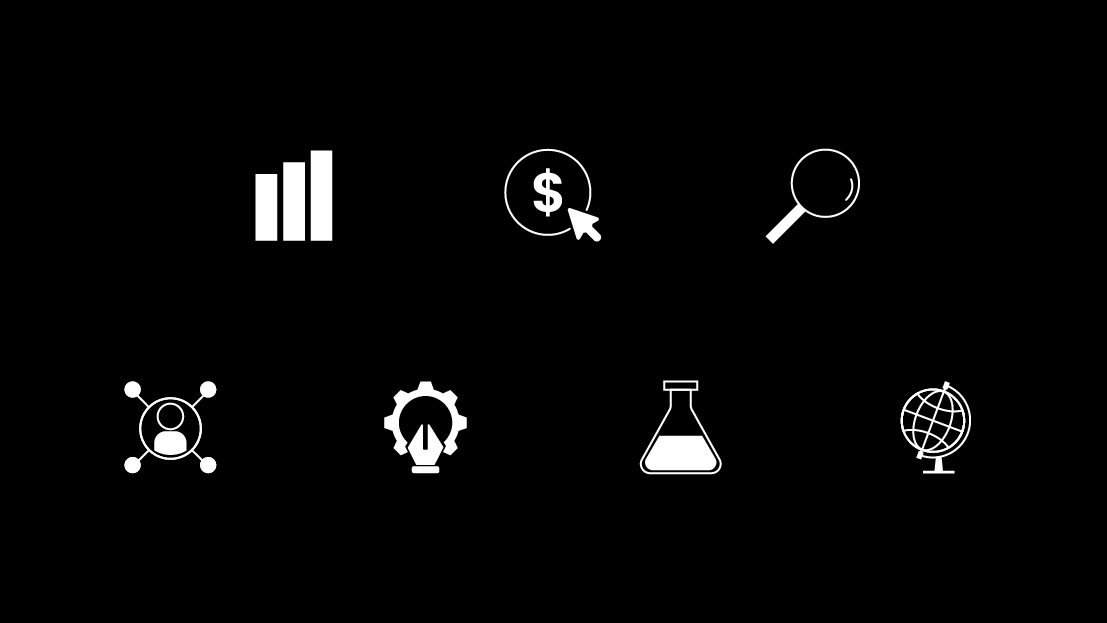Far too many organizations take the Ron Popeil approach to Analytics: “Set it and forget it!” That approach may work in the kitchen, but when it comes to making informed decisions for your business based on concrete data... it won’t fly.
In reality, analytics is more than just adding code to your site and instantly gaining insights - it’s about understanding the business’ internal stakeholders, a person or group that has an investment, share, or interest in growing the business through digital efforts. From the CMO’s marketing goals to tracking the e-commerce’s team product objectives, it’s crucial to pinpoint how data points will be needed to help their overall business goals.
By the same token, don’t assume that anything analytics related is automatically within the domain of your company’s IT department. Many believe that opening the door to data begins by dropping analytics tracking code on your site. However, Seer’s analytics Team Lead, Michelle Noonan explains that,
Analytics isn’t just about data collection and implementation.
“It’s not even just about interpreting that data once you’ve collected it. It’s about strategic collection from the start - so you can have a more purposeful analysis.”
Develop an Analytics Strategy First
Michelle noted that many organizations will often spend a ton of time developing a website redesign strategy, yet she cautioned that they need to spend just as much time thinking about a strategy to collect data from their site.
A 2014 article in AdWeek pointed out that, “Business, organizational growth and legitimacy depends on effective stakeholder and consumer engagement and acceptance. Growth, like success, should be precisely targeted through performance indicators and metrics. Managing the decision-making process solely based on intuition and experience is considered suspicious today.”
Many times, key stakeholders within an organization know that they need data - but they may not understand the depth of information web analytics can provide to improve their business efforts.
Everything from simple code implementation to more complex closed loop reporting, begins with the stakeholder process.
In order to reap the full benefits of analytics, a more in-depth pre-analysis needs to take place -- well before any code is placed on the site. While many companies have IT teams that are savvy enough to correctly place analytics code on a website, very few have a team of people who are well-versed in analyzing that data - and can use it to gain insights for improving their business.
This is where it benefits teams to tap into the knowledge of those with analytics experience and who specialize in interpreting data to help businesses make the right decisions for their bottom line.
Seer’s approach to analytics is about shaping a strategy for tracking what’s truly important rather than just getting tracking code on a website based on what companies think might work.
Understand Stakeholder’s Needs Before Implementation
To encourage more mindful collection of data at the outset of an Analytics engagement, Seer created a rigorous analytics stakeholder process. This process entails conducting a series of interviews with stakeholders in various divisions of a company long before analytics tracking code is applied to a site.
“Understanding the client’s needs and goals have always been a part of our process -- and for Seer in-general,” said Michelle. “The key piece within our analytics services is that we now take even more time to understand our main point of contact. This helps our main point of contact bridge to other stakeholders within the company and to understand how different people will use the data.”
Seer conducts stakeholder interviews with everyone from CMOs to developers, as well as members of a company’s sales team and social media team.
Understanding how each of these diverse groups will use the data is the first critical step to setting goals and KPIs. For instance, a developer may be more concerned with the user experience of a site, while the sales team may want to know whether customers are calling the right service number. Others may want confirmation about who their audience is and if they’re targeting the right people. All of these factors go into creating a well-informed analytics strategy that will help organizations make better business decisions.
When interviewing a company’s team, Seer’s analytics team asks each of the stakeholders relevant questions designed to weed out what is most important to them. For example:
- What are you responsible for reporting to your boss?
- What do you consider a success on the whole?
- What keeps you up at night?
"Our job is to understand the person’s goals and then help them decide on what website metrics are linked to those business goals,” explained Michelle. “In theory, you can use every single data point… But you wouldn’t want to.”
The stakeholder process allows our team to select elements in the conversion funnel that are the most critical to track the company’s efforts.
Analytics in Action
Through AB testing, experimentation, and a deep dive into results, an informed analytics strategy can uncover findings about a business’ customers that they were previously unaware of. “We’ve been able to use data to find that a company’s users weren’t getting to a page that was key to their site,” said Michelle. Equipped with this analytics data, “when they redesigned the site, they were able to say ‘Hey, this page is important to us. People aren’t getting to it. We need to put this page in a better place so that they can get to it.”
“It’s crucial to understand how people create and use information.”
"This means that project teams need members well versed in the cognitive and behavioral sciences, not just in engineering, computer science, and math” (Source: Harvard Business Review).
By using analytics to learn more about their audience and their habits, organizations are able to make better decisions about where to invest their marketing dollars moving forward and in turn, gain a greater understanding of where the most return on investment (ROI) will come from.
With analytics, companies can dive into how people are interacting with the information on their website, determine which past campaigns performed well and which didn’t -- as well as gauge form completions and other items, all of which tie into a bigger picture revenue goal.
Looking to the future of analytics and its role in informing larger strategic initiatives, Michelle offered that, “The strategic collection of data allows you to be less reactive and more proactive.”
In the end, analytics informed by a stakeholder process, that combines the human element of knowledge, learning, and practical application, will enable companies to track success on pre-established business goals and drive much more informed business decisions - than analytics that focuses solely on technical expertise.
Want to learn more about how analytics can help you prove the value of your marketing efforts? Watch our video on the basics of closed loop reporting - and why it’s crucial to growing your business.



